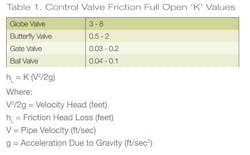Here in the United States, when we turn on our taps, we can rest easy knowing that what comes out is safe to drink. This is due in large part to the competence and skill of the men and women certifed to treat our water and ensure its quality.
But this hasn't always been the case. Operator certification dates back to 1918 when New Jersey enacted the first program requiring mandatory certification. Other states followed suit and by the mid-1960s, more than 80 certification programs had been established. Some were mandatory, some were voluntary; but they were all different and still are today.
"I think it's safe to say that no two were alike," said Harris Seidel, past president and executive director of the Association of Boards of Certification (ABC). "Someone then called it a 'hodgepodge.'"
A survey of certification practices conducted by the Water Environment Federation (WEF) in 1969 concluded that the programs were "as diverse as they were numerous," ultimately impairing the value of certification. WEF's survey demonstrated "a critical need for a nationwide standard of personnel classification."
"Professional certification programs protect public health and safety by testing and verifying that employees possess a specific level of job knowledge, experience, and skill," said Paul Bishop, CEO of the Association of Boards of Certification. "Despite the high quality of water certification programs today, the lack of consistency among programs undermines their value."
In addition to the tremendous challenges posed by aging infrastructure, the water and wastewater industry is coping with an impending brain drain. Bishop explained that, with about a third of the workforce expected to retire before 2020, the lack of consistency among certification programs "confines personnel recruitment efforts to a single state or region."
Sandra Ralston, president of WEF, pointed out that the demand for wastewater professionals is expected to grow 20% over the next four years. In addition, increasingly stringent regulations and progressively more complex treatment processes "point to the need for a sustainable program of training and certification that will nurture an adequate operator workforce," she said.
To that end, the ABC has introduced its http://www.abccert.org/pdf_docs/ModelStandardsofOperatorCertification.pdfModel Standards of Operator Certification to establish a benchmark for consistency among programs - the industry's first such guidelines. Their purpose is three-fold: to increase the credibility and value of operators' credentials; to improve efficiency in hiring; and to promote public confidence in the safety of municipal water and the environment.
"ABC's goal in developing these standards was not to judge the quality of any one program but to enhance the integrity of all programs," said Bishop.
"We'll never reach uniformity," said Seidel, "nor is that necessary. But we owe it to the people we serve to get our act together, to get our programs generally on the same page." Seidel acknowledged that only the programs themselves can make program changes. Thus, he issued to the water and wastewater industry a worthy challenge: Dislodge the hodgepodge.
Chief Editor, WaterWorld
Chief Editor
Oops!
In our January issue, we inadvertently omitted a table from Allan Budris's Pump Tips column, "Selecting the Optimum Pump Control Valve to Save Substantial Wasted Energy Dollars." You can view the corrected article in its entirety on our website. We apologize for any inconvenience.






